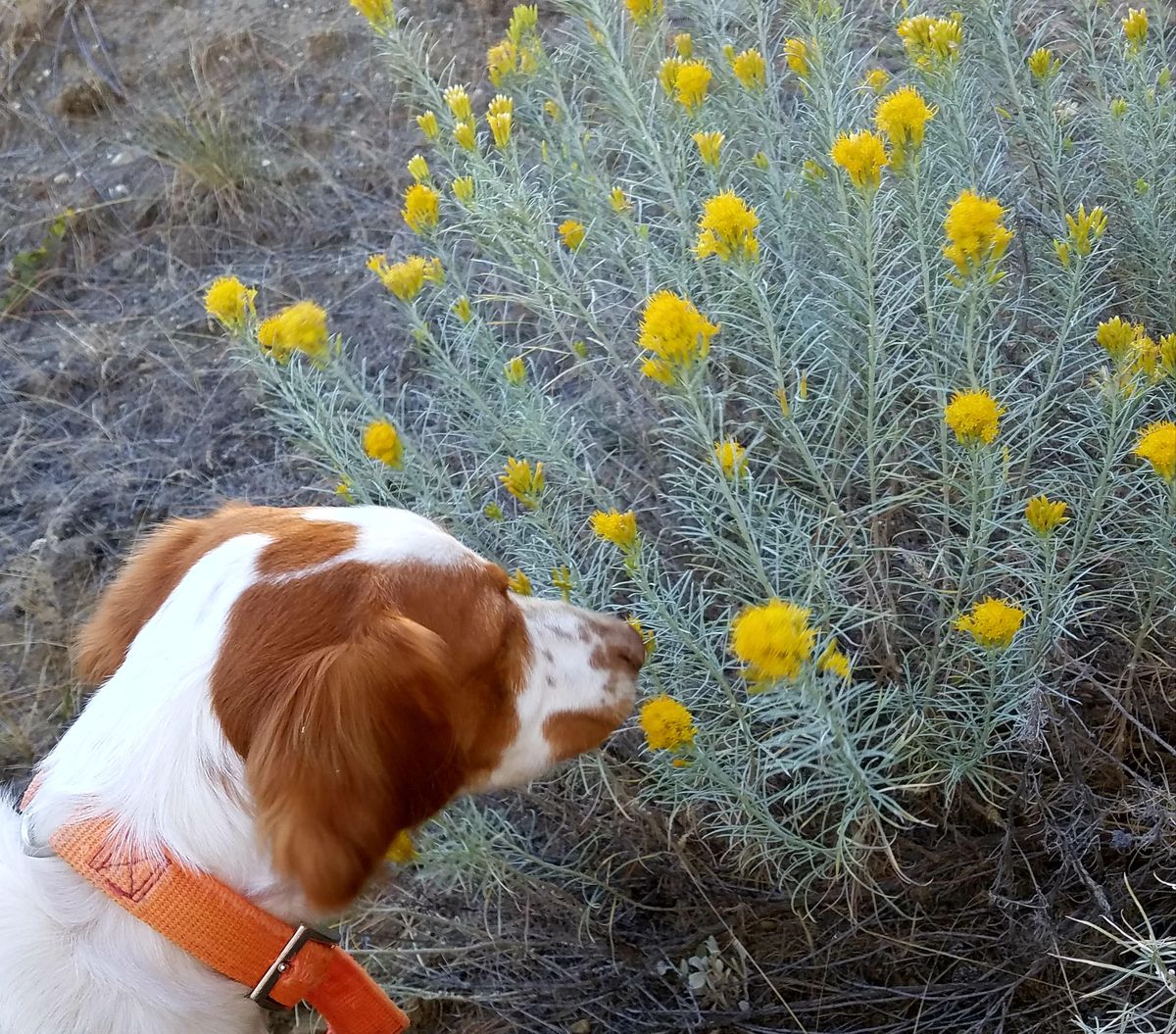Surprising late summer bloom shocks parched landscape

A surprising annual display among wild plants has shocked the region’s parched landscape with delicate springlike yellow blooms that started appearing in the last week of August.
While many native plants and most unwatered domestic varieties were shriveled to the consistency of cornflakes by the summer’s rainless heat wave, rabbitbrush has exploded with plumes of yellow blooms throughout dryland areas of the West.
The grayish plant is in the Aster family with sagebrush and often grows inconspicuously in the same areas.
Rabbitbrush, also found around the dry edges of Spokane, is merely among the showiest of a suite of plants adapted to germinate in the fall, said April Hulet, assistant professor at the University of Idaho’s forest, rangeland and fire sciences department. “If you’re having trouble with fall allergies, sage or rabbitbrush are probably responsible,” she said.
The local variety more precisely called Rubber rabbitbrush (Ericameria nauseosa), is a perennial shrub native to the West. Indeed, it has rubber content that’s been fruitlessly explored for possible commercial value. “Nauseosa” refers to the heavy scent of its crushed leaves, but the aroma isn’t THAT bad.
Quick-growing rabbitbrush takes root faster than sage and competes less with forbs and grasses, making it a shading, soil stabilizing and enriching healing factor for plant communities following disturbance. The value of several other species of rabbitbrush for dryland landscaping is catching on.
It’s not an important forage for livestock, but rabbitbrush can be of significant value to mule deer during a tough winter on arid rangelands. It provides good cover for nesting birds in spring. Rabbits may use it for cover and minimally for nutrition, but the late-summer bloom of rabbitbrush is a big boost at an otherwise lean time of the year for bees, butterflies and other pollinators.
That late-summer bloom is always a surprising pleasure to the eyes. Summer doesn’t officially bow to autumn until Sept. 22, but rabbitbrush blooms a month or so earlier, about the time hunters, firefighters and anglers begin celebrating the shift of seasons.
Land and wildlife managers refer to the transition as the “August singularity,” an annual weather change that occurs around the third week in August to effectively advance the season just about the time fire crews are stretched beyond their limits and bowhunters praying for cooler nights.
It’s this moment that rabbitbrush becomes the single-most eye-catching native plant on the drylands.
“It’s another way plants are so neat,” Hulet said. “They all have different mechanisms.”